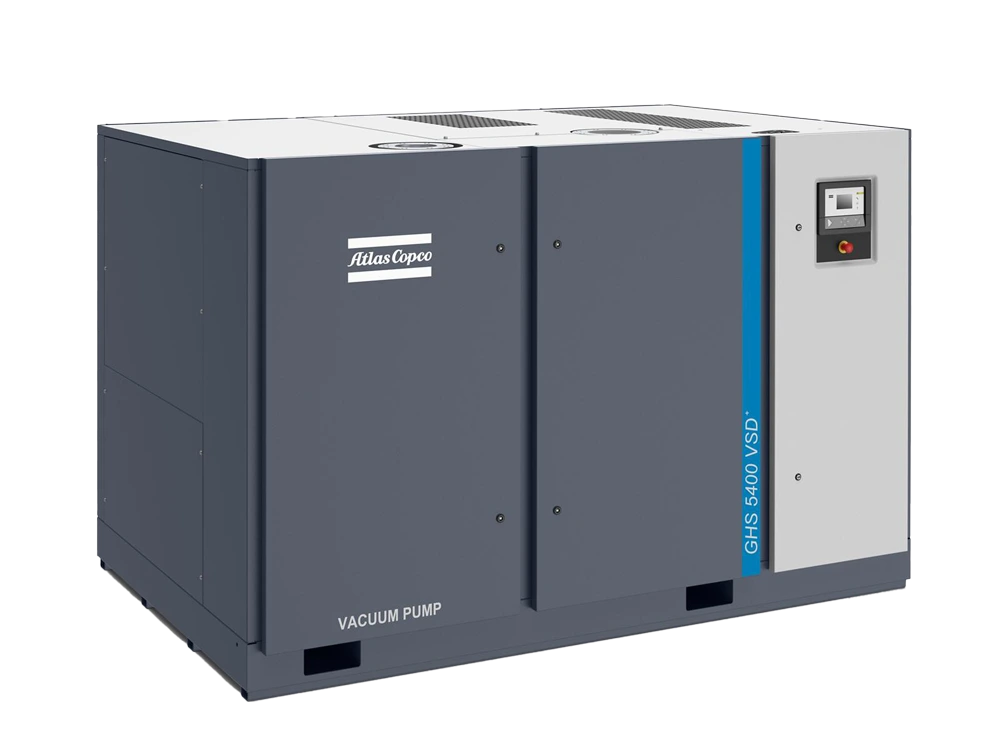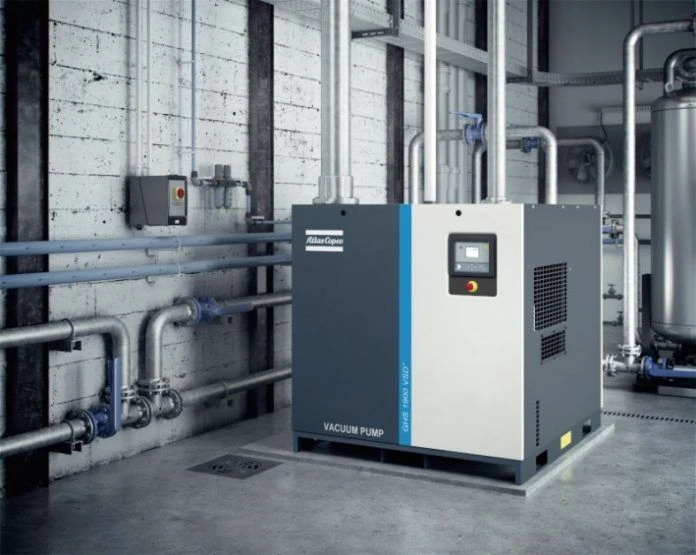Is an air vacuum pump truly an industry game-changer? While often overlooked, these essential devices play a pivotal role in numerous sectors, from semiconductor processing to the medical field. This article delves into the criticality of air vacuum pumps, shedding light on their diverse applications. Understanding the integral function and different types of vacuum pumps can significantly influence industry efficiency and success. Read on to explore how selecting the right air vacuum pump can optimise operations, ensure seamless installation and maintenance, and troubleshoot common issues, securing your pathway to industrial triumph.
Understanding Air Vacuum Pumps and Their Applications
Air vacuum pumps function by creating a partial vacuum to remove air or gas molecules from a sealed volume, allowing for controlled environments within various applications. These pumps are essential for operations where air removal is crucial, facilitating processes that require a clean and dry atmosphere or specific pressure conditions.
- Composite plastic moulding
- Electric lamp production
- Semiconductor processing
- Medical procedures like radiotherapy
- Food packaging industry
Air vacuum pumps are indispensable across many sectors. In the food industry, they extend shelf life by removing air from packaging, while in medical settings, they ensure precision and safety in procedures such as radiotherapy. The ability to maintain specific environmental conditions makes them vital for the success and efficiency of modern industrial and scientific operations.
Types of Air Vacuum Pumps: A Detailed Overview
Air vacuum pumps come in various types, each designed to meet specific industrial and scientific needs. These pumps differ in their operational principles and applications, catering to diverse sectors ranging from automotive to semiconductor manufacturing.
Mechanical Vacuum Pumps
Mechanical vacuum pumps, such as Rotating-Vane Vacuum Pumps, operate by using electric motors to draw air from a closed volume and expel it into the atmosphere. These pumps are commonly used in applications where a reliable and straightforward vacuum source is needed, such as in HVAC systems and automotive applications. Their ability to handle a broad range of pressures makes them versatile for many industrial processes.
Positive Displacement Pumps
Positive Displacement Pumps function by expanding a cavity to allow gas inflow, subsequently compressing and discharging the gas. This mechanism is particularly effective in maintaining a consistent vacuum level, which is critical in applications like packaging and environmental testing. These pumps are valued for their efficiency and ability to produce a stable vacuum despite fluctuations in system conditions.
Momentum Transfer Pumps
Momentum Transfer Pumps utilise high-speed jets or rotating blades to displace gas molecules, creating a vacuum by imparting kinetic energy to the gas. These pumps are ideal for high and ultra-high vacuum applications, such as those found in scientific research and development. Their advanced technology allows for precise control over vacuum conditions, making them indispensable in laboratories and production environments requiring high vacuum levels.
Regenerative Pumps
Regenerative Pumps, characterised by their sets of perpendicular teeth on a rotor, circulate air molecules within stationary grooves. This design is particularly beneficial in semiconductor manufacturing, where maintaining a clean and controlled environment is paramount. Despite their higher power consumption compared to other types, regenerative pumps offer superior performance in applications demanding high levels of precision and reliability.
Air vacuum pumps play a critical role in various industries, each type tailored to specific tasks and operational requirements. By understanding the differences and capabilities of these pumps, businesses can select the most suitable option for their specific needs, ensuring efficiency and effectiveness in their processes.
How to Choose the Right Air Vacuum Pump

Selecting the right air vacuum pump is crucial for ensuring efficient operation in industrial and scientific applications. When choosing a pump, consider factors such as flow rate, which determines the speed at which the pump can remove air from a system. Power consumption is equally important, as it impacts the overall operational cost and energy efficiency. Compatibility with the intended application is vital, ensuring the pump meets specific requirements such as pressure levels and environmental conditions. For those looking into portable air vacuum pumps or DIY AC vacuum pump projects, these factors play a significant role in achieving optimal performance and longevity.
- Flow rate
- Power consumption
- Application compatibility
- Environmental conditions
Consulting with professionals can greatly enhance the selection process. Experts like those at Design Air provide comprehensive guidance in designing and specifying vacuum systems tailored to individual needs. Their expertise ensures that all aspects, from system design to component selection, align with the operational demands and industry standards. This professional insight not only optimises system performance but also reduces the risk of costly errors and inefficiencies. Engaging with specialists can therefore be a decisive factor in deploying an effective vacuum system.
Installation and Maintenance of Air Vacuum Pumps
Installation Guide
Setting up an air vacuum pump requires careful attention to detail to ensure optimal performance and longevity. What is the first step in installing an air vacuum pump? Connect the pump via the designated inlet and outlet ports. This ensures that the vacuum system is properly integrated into the intended application.
Following this, how should the vacuum pump oil be managed? Fill the pump oil to the bottom of the sight glass. This step is crucial for maintaining the pump’s lubrication and preventing operational issues. Ensure all connections are secure, and the pump is placed on a stable surface to minimise vibrations and potential damage.
Finally, run the pump briefly to check for any leaks or irregularities before full operation.
Maintenance Tips
Regular maintenance is key to the efficient operation of air vacuum pumps. What should be regularly checked as part of vacuum pump maintenance? Oil levels should be checked frequently. Maintaining the correct oil level is vital for the pump’s functionality and longevity.
How can one ensure optimal connections? Regularly inspect and clean all connections to prevent blockages and ensure airtight seals. Additionally, monitor the pump’s performance for any unusual noises or drops in efficiency, which could indicate the need for further inspection or servicing. Adhering to a consistent maintenance schedule will help avoid costly repairs and downtime.
| Step | Description |
| 1 | Connect the pump via designated inlet and outlet ports |
| 2 | Fill pump oil to the bottom of the sight glass |
| 3 | Secure all connections tightly |
| 4 | Place the pump on a stable surface |
| 5 | Run the pump briefly to check for leaks or irregularities |
By following these installation and maintenance guidelines, users can maximise the performance and lifespan of their air vacuum pumps, ensuring they remain a reliable component of industrial and scientific operations.
Troubleshooting Common Air Vacuum Pump Issues
Air vacuum pumps, while robust, are not immune to operational issues. Common problems often stem from incorrect pressure levels and improper connections. What is a frequent cause of air vacuum pump inefficiencies? Incorrect pressure levels are a frequent cause. These discrepancies can lead to suboptimal performance and potential damage to the system. Improper connections, such as loose fittings or blocked pathways, can also hinder the vacuum pump’s effectiveness, leading to air leaks or reduced vacuum efficiency. Regular maintenance and checks are crucial to identify and rectify such issues promptly.
- Incorrect Pressure Levels: Adjust the pump settings to ensure it operates within the manufacturer’s specified pressure range.
- Improper Connections: Verify all fittings and hoses are secure, and check for any obstructions or leaks.
- Oil Contamination: Replace the oil regularly to prevent dirt and moisture accumulation, which can impair pump performance.
Maintaining correct pressure levels and ensuring secure connections are vital for the effective operation of air vacuum pumps. Why is it important to maintain these conditions? Secure connections and correct pressure levels prevent air leaks and ensure the system operates efficiently. Regular inspections can help identify potential issues early, reducing downtime and extending the pump’s lifespan. Consistent monitoring and maintenance play a pivotal role in sustaining the functionality and reliability of air vacuum systems.
Final Words
Exploring the intricacies of air vacuum pumps reveals their indispensable role across diverse industries.
From medical applications to food packaging and semiconductor processing, their functionality underpins many essential processes.
Understanding the various types, including Mechanical, Positive Displacement, Momentum Transfer, and Regenerative Pumps, aids informed decisions for specific needs.
Selecting the right pump involves considerations such as flow rate and power consumption, often benefiting from professional guidance.
Proper installation and maintenance remain crucial for efficiency, while troubleshooting common issues ensures continued optimal performance.
Embracing these best practices with air vacuum pumps enhances reliability and longevity, fostering success in any application.

Leila specializes in exploring emerging tech trends, user-centric design strategies, and the integration of cutting-edge tools into digital platforms.

